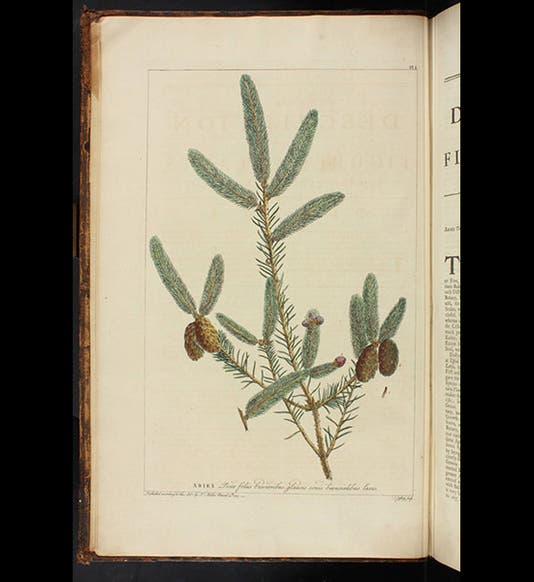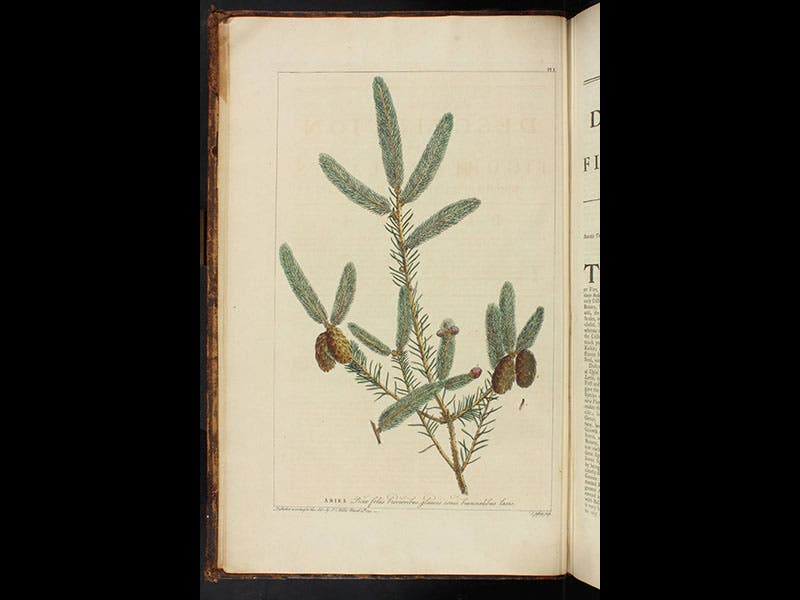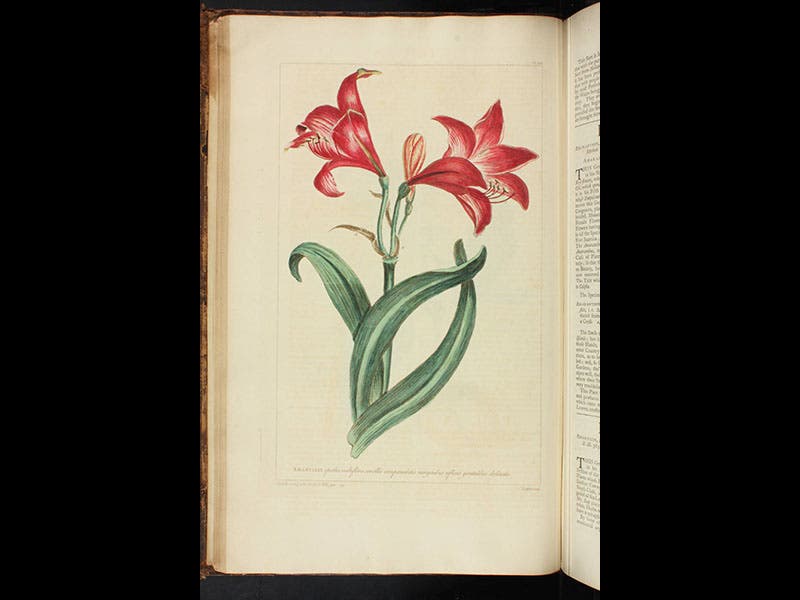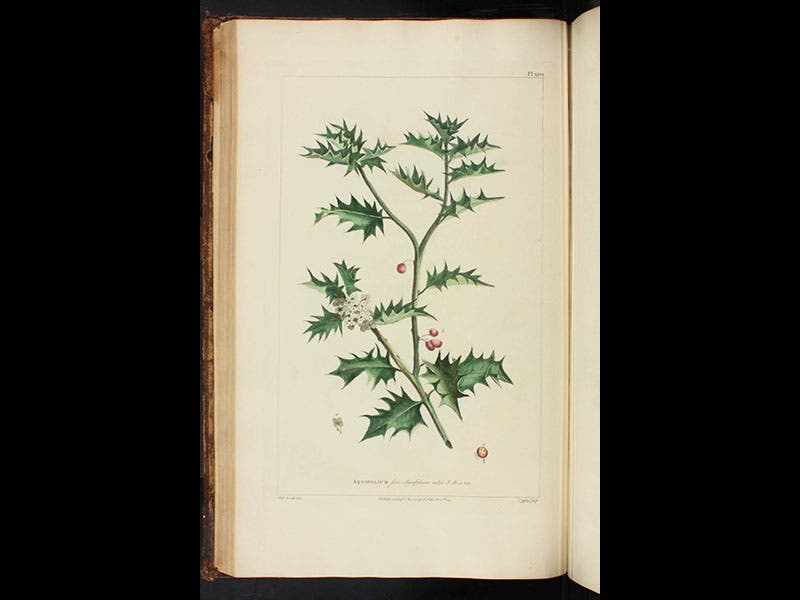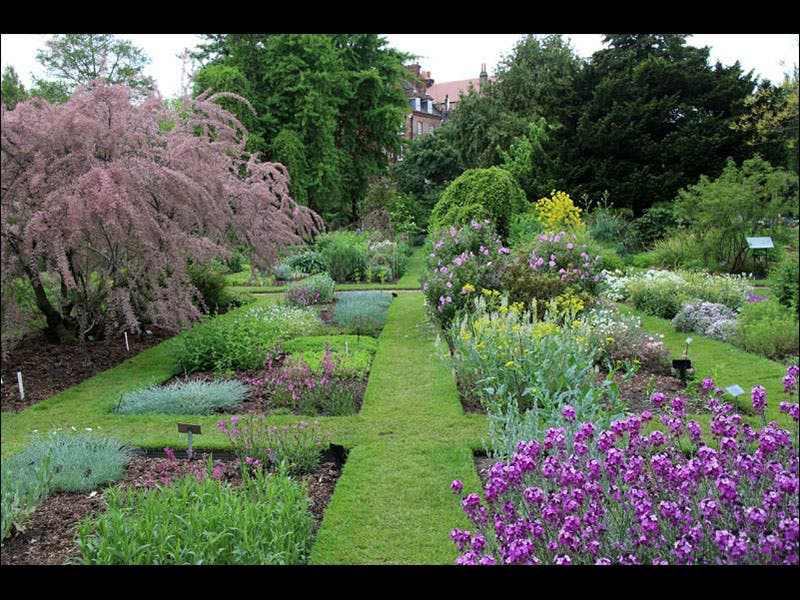Scientist of the Day - Philip Miller
Philip Miller, an English gardener, died Dec. 18, 1771, at the age of about 80. It is fashionable to call Miller a horticulturist, but he would not have recognized the term--his father was a gardener, and he was a gardener. In 1722, he was appointed Gardener of the Chelsea Physic Garden in London. The garden had been founded in 1671 by the Society of Apothecaries, and it moved to its present site on the Thames when a benefactor gave them a token lease on the 4-acre plot. Miller had a handful of green thumbs, and he turned Chelsea into the most esteemed botanical garden of the 18th century, with his ability to raise exotic plants and bring them to fruit or flower.
In 1731, Miller issued The Gardeners Dictionary, which would become an essential handbook for gardeners everywhere, going through 8 editions in Miller's lifetime. We have two of those editions in our Collections. Although The Gardeners Dictionary was illustrated, Miller thought that a separate set of engravings to accompany the Dictionary would be nice, and he began issuing Figures of the most beautiful, useful, and uncommon plants described in the Gardeners Dictionary in parts in 1755; the 300 engravings were then published as a two-volume set in 1760. We own this work as well, and it contains beautiful hand-colored engravings made from drawings by the best botanical artists of the era, including the incomparable George Ehret. The first three illustrations above are taken from the Figures, both volumes of which are available online in our Digital Collections.
The final two images show contemporary views of the Chelsea Physic Garden. The statue honors Hans Sloane, the Garden’s financial benefactor, and not Miller, their botanical benefactor, a commemorative mistake that is made all too often.
Dr. William B. Ashworth, Jr., Consultant for the History of Science, Linda Hall Library and Associate Professor, Department of History, University of Missouri-Kansas City. Comments or corrections are welcome; please direct to ashworthw@umkc.edu.

